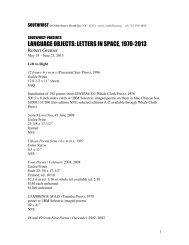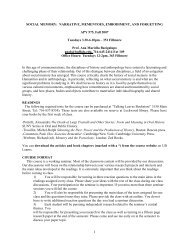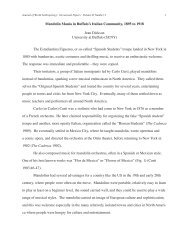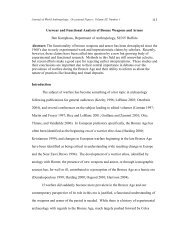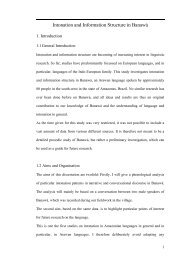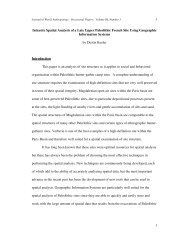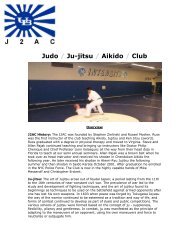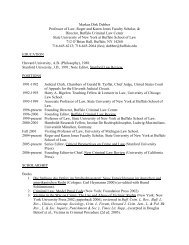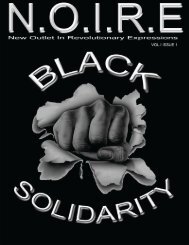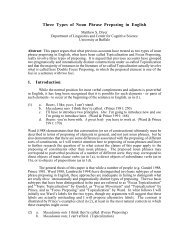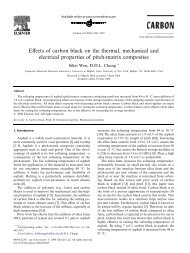Electrophysiological Evidence for Sentence Comprehension - Wings
Electrophysiological Evidence for Sentence Comprehension - Wings
Electrophysiological Evidence for Sentence Comprehension - Wings
Create successful ePaper yourself
Turn your PDF publications into a flip-book with our unique Google optimized e-Paper software.
in<strong>for</strong>mation on-line. Finding the notion of Broca’s area, traditional language area, ‘ill-<br />
defined’ and finding no reason ‘to treat Broca’s area as a natural kind’ (Hagoort,<br />
2005:419), Hagoort emphasizes the importance of the granular cortex that comprises of<br />
BA44 and BA47 that is involved in heteromodal processing. Unlike them, BA45 is a part<br />
of the Broca’s area that is not granular. Hagoort concludes that it there<strong>for</strong>e makes sense<br />
to treat the left inferior frontal gyrus as the brain area in which the unification processes<br />
can take place (i.e. processes that do not depend on the input system, but are genuinely<br />
linguistic). It can hold on-line lexical in<strong>for</strong>mation stored in the left temporal lobe and<br />
integrate them into representations of multi-word utterances. This lexical storage is the<br />
memory component in MUC. The role of the control component is a liaison to the<br />
communicative intentions or actions of the speaker (or listener). It accounts <strong>for</strong> the<br />
attentional control, turn taking or choice of a sociolect, <strong>for</strong> example. It is located in the<br />
anterior cingular cortex and the dorsolateral prefrontal cortex.<br />
Combining psycholinguistic model of sentence comprehension developed by Vosse and<br />
Kempen with neuroimaging studies and trying to establish relations between the elements<br />
of the psycholinguistic model and the function of the identified brain areas has an<br />
obvious advantage over the ‘syntax-first’ models in which elements of psycholinguistic<br />
models are just mapped onto the data obtained in electrophysiological recordings or brain<br />
imaging. Memory in MUC corresponds to lexical storage and retrieval; unification in<br />
MUC corresponds to the integration of the lexical in<strong>for</strong>mation into multi-word<br />
representation while control corresponds to the pragmatic in<strong>for</strong>mation contained in the<br />
linguistic message. In other words, the model dissolves language comprehension process<br />
39




